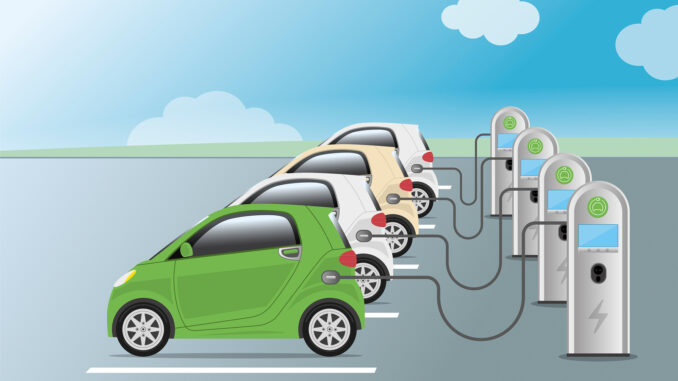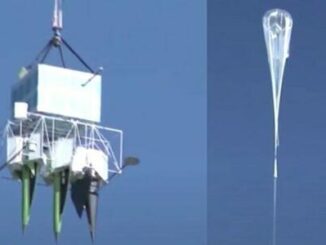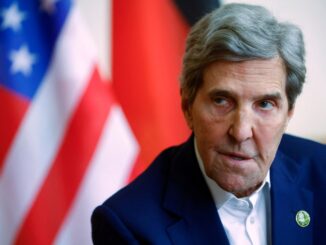
With slower than expected sales in electric vehicles, automakers are questioning their multibillion-dollar investments in new factories and raising doubts about the effectiveness of Biden’s federal incentives. General Motors delayed plans to expand its electric pickup truck production at a plant in suburban Detroit, and canceled a program with Honda to sell electric vehicles for around $30,000. Ford paused its $3.5 billion EV plant in Marshall, Michigan and $12 billion of its planned $15 billion EV investment, citing market conditions. Despite $1.7 billion of promised taxpayer incentives for the plant and site readiness, Ford is not confident it can run the Michigan plant competitively. Further, as electric vehicles are sitting unsold on dealer lots, automakers and dealers are slashing prices and piling on discounts to clear out the unsold inventory. High inflation and high interest rates are making vehicle purchases difficult for everyday people. Auto executives are worried that many consumers have hit their limit.
EV Prices Reduced through Rebates and Lease Deals
EV sales promotions have taken different forms. Some automakers, such as Hyundai Motor and Ford Motor, are offering cash rebates as high as $7,500 on top of the federal tax credit on some models. Others are offering aggressive lease deals that offer cheaper monthly payments or shorter contract lengths to attract buyers. Many car companies are offering low-interest rate promotions to make pricey electric vehicles more affordable. On average, customers received about a $2,000 discount on an electric vehicle in September, compared with a year prior when they paid a $1,500 premium. Industrywide, shoppers paid around $930 less than the sticker price in September. As wealthier EV adopters have already purchased an electric vehicle, the industry is now confronted by a more reticent group of consumers, who are being squeezed by high interest rates and rising costs.
Electric vehicles are now some of the slowest sellers on dealership lots. In September, it took retailers over two months to sell an electric vehicle, compared with around a month for gas-powered vehicles and only three weeks for a gas-electric hybrid. That trend is expensive for dealers who take out loans to finance their fleet. The longer a vehicle sits on the lot, the more it eats into potential profit. At the end of September, automakers had 88 days’ worth of EV inventory, compared to 56 days for conventional models.
The discounting activity is helping to bring down the cost of battery-powered cars, which on average sold for about $50,683 in September, down from more than $65,000 last year. By comparison, prices overall for new vehicles remained at about $48,000. According to car executives and dealers, the discounts will likely continue for now, especially in the form of lease offers.
The discounts are threatening to exacerbate problems at startups, which are swiftly burning through their remaining cash. Luxury electric-vehicle maker Lucid in August marked down the price of its vehicles by up to $13,000, due to weakening demand. EV startup Fisker said that it was lowering the price of its Ocean Extreme SUV, a brand-new model that went on sale this year, by $7,500 in response to “competitive realities.” Fisker’s vehicles do not qualify for a federal tax credit because they are built outside the United States.
Climate Law Pushed Manufacturers into EVs
President Biden’s climate law, the Inflation Reduction Act (IRA), stimulated a surge of investment in electric vehicle production across the country, including tens of billions of dollars on battery plants across the South and new assembly lines near the Great Lakes. Under the law, companies get lucrative tax credits for investing in electric vehicle production and component parts like advanced batteries. But, the climate law has not drastically affected trends in electric vehicle sales. Expectations are that Americans will buy one million electric cars and trucks this year, continuing a steady trend of increased market share for electric vehicles, but not close to what is being manufactured. Even Tesla is considering abandoning its $1 billion investment in a plant in Mexico despite seeing a grow rate of 51 percent in revenue last year.
The reality is that electric vehicles are too expensive for the American public. A Ford F-150 Lightning starts at about $50,000, before federal tax credits of $7,500. A base model gasoline-powered F-150 starts at less than $37,000. GM’s Chevrolet Blazer starts at around $37,000, but the electric version costs a minimum of $56,000 before tax credits. Even with those price differences, Ford says it is losing over $60,000 for every electric vehicle it makes for a total of $4.5 billion this year. Without an American supply chain, however, electric vehicles cannot qualify for the full $7,500 consumer tax credit. Without the full credit, a typical electric vehicle remains much less affordable than a conventional automobile. President Biden’s climate advisor Ali Zaidi has admitted that the administration’s programs include reducing Americans’ reliance on cars, i.e. speeding the process of getting Americans out of their personal transportation choices.
Those IRA requirements, however, do not apply to the leasing market, which explains a shift in consumer preferences. Many car shoppers lease electric vehicles instead of buying them because a Treasury Department regulation enables auto dealers to avoid the law’s made-in-America requirements for cars that they buy and lease to customers. The regulation allows shoppers to obtain the full federal tax credit for models that otherwise would not qualify. The auto dealers association calculates that more than half of electric vehicle transactions in the United States — excluding Teslas, which are not sold through traditional dealership models — are leased, a large increase from a year ago, when it was around 30 percent.
China in the Driver’s Seat
The vehicle transition is effectively subsidizing China, which leads the world in electric-car manufacturing and battery technology and is home to vast stockpiles of critical minerals needed for batteries and other components. The United States has been slow to invest in raw materials and parts needed for batteries, including mines producing minerals like cobalt, and factories making chemicals that go into batteries, partly because of Biden’s anti-mining actions. U.S. companies have even sold their interests in cobalt companies in the Democratic Republic of the Congo to Chinese companies. China is decades ahead of the United States in these endeavors, meaning it may be impossible to catch up because China’s control means it can flood markets and drop prices for minerals whenever a prospective mine is announced elsewhere, undermining the mine’s economic viability.
Chinese electric-vehicle-battery firms are becoming major export players. Contemporary Amperex Technology (CATL) and carmaker BYD are the top two producers of EV batteries in the world. Chinese battery manufacturers, however, lag behind South Korean rivals outside China, but that could change due to CATL’s growth numbers. Chinese firms are eyeing big new factory expansions in Europe and in U.S. free trade partners as a way to sidestep current and future U.S. import restrictions—much like Japanese carmakers did in the United States in the 1980s. Chinese firms have announced overseas investments of more than 200 billion yuan, $27 billion, in batteries and materials with more than 80 percent of that in Europe. China has also become the world’s top exporter of electric vehicles.
Despite China’s monstrous lead, the Biden administration is expected to issue more rules about when parts can be sourced from China and other countries, hoping for a renaissance in EV battery and vehicle manufacturing in the United States. He already has proposed regulations from the Environmental Protection Agency and the National Highway Transportation Safety Administration that encourage automakers’ investment in electric vehicle production by requiring that two-thirds of all new passenger cars sold in the United States be all-electric within a decade. If the regulations are implemented and auto manufacturers do not meet the standard, they will need to pay fines, causing vehicle prices to increase.
Conclusion
While the battery-powered vehicle market is still expanding, the pace of growth has slowed considerably. As a result, legacy automakers that had been spending heavily to build their electric car businesses due to incentives from Biden’s climate law, are now taking a more cautious approach to investments. And, they are offering discounts on electric vehicles as dealer lots are overflowing. Ford and GM are losing tens of thousands of dollars for every electric vehicle produced and sold and they have just given big raises to the United Auto Workers union. Biden’s climate law and proposed regulations pushing electric vehicles just might result in automakers needing another multi-billion dollar taxpayer bailout.
John Mozena, president of the Center for Economic Accountability, said this is a “great example” of central planning. “This is a great example of what happens when government central economic planning runs face-first into the real world of consumers having inconvenient opinions and making actual decisions. At the end of the day, it doesn’t matter how many EVs automakers build. Rather, it matters how many EVs consumers want to buy and drive.”



